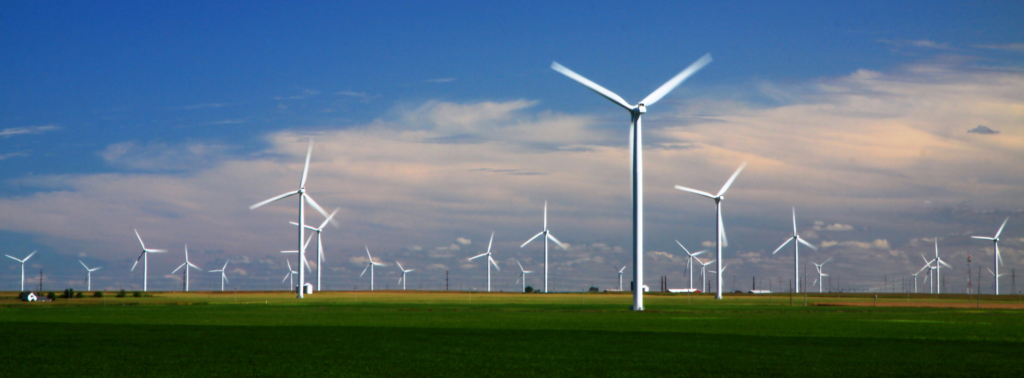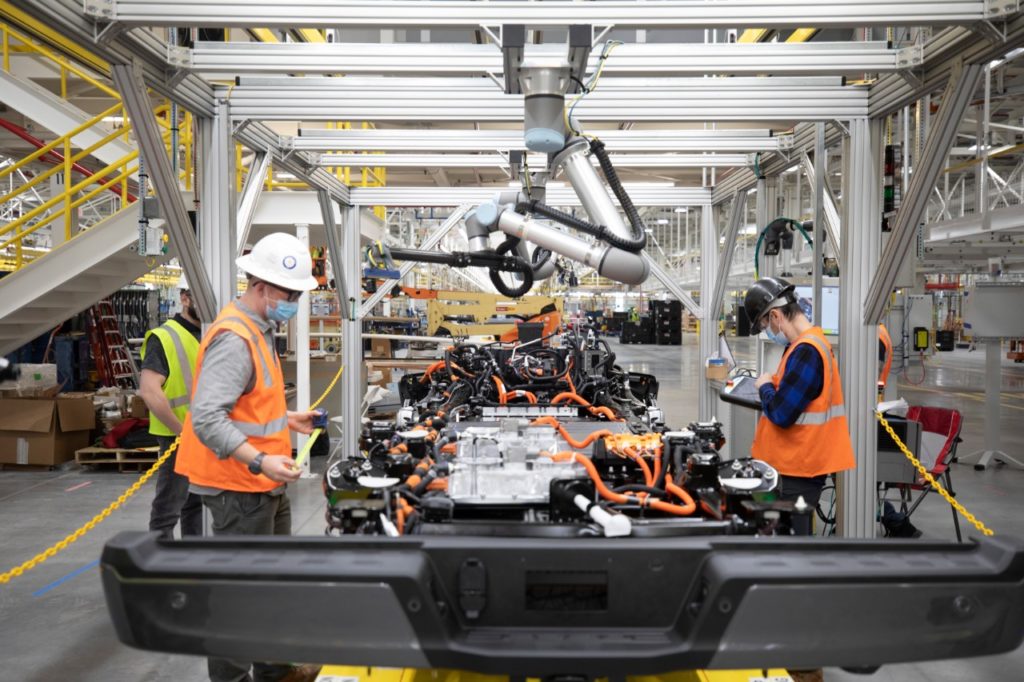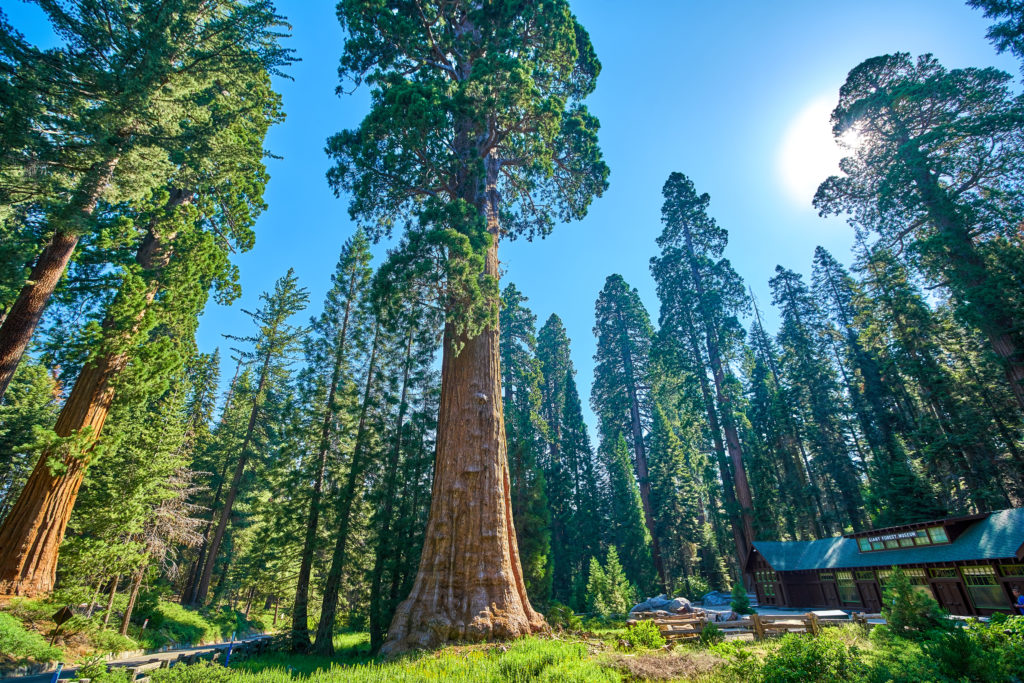

9 Million Jobs from Climate Action: The Inflation Reduction Act
A new analysis commissioned by the BlueGreen Alliance from the Political Economy Research Institute (PERI) at the University of Massachusetts Amherst finds that the more than 100 climate, energy, and environmental investments in the Inflation Reduction Act will create more than 9 million good jobs over the next decade—an average of nearly 1 million jobs each year.1,2 That includes more than 6 million jobs created over the next 10 years by grants, loans, and tax credits and nearly 3 million jobs stimulated by new loan guarantee authority for the U.S. Department of Energy. The bill’s broad investments will also help sustain the millions of existing jobs in the clean economy.
Few pieces of legislation this century have come close to such sweeping potential for good job creation. With robust application of the bill’s strong labor standards, many of these jobs in growing sectors like clean energy, clean manufacturing, and efficient buildings will offer workers good wages and benefits. To advance economic and racial justice, registered apprenticeship programs, targeted investments, and equitable hiring practices should be used to prioritize job access for low-income workers, workers of color, and workers in environmental justice, deindustrialized, and energy transition communities.
In short, the bill’s unprecedented investments offer an unparalleled opportunity for workers and communities to capture the economic gains of the growing clean economy. Below is a synopsis of some of the jobs that the Inflation Reduction Act will create.

Clean Energy: 5 Million Jobs
The Inflation Reduction Act’s historic investments to accelerate clean energy deployment not only will help achieve our climate goals, but also will create nearly 5 million jobs over the next decade. That includes:
- Clean energy tax credits: More than 1.7 million jobs from tax credits that will dramatically expand access to solar, wind, and other clean energy sources;
- Grid modernization: Nearly 40,000 jobs from loans and grants to make our electricity transmission infrastructure more resilient, reliable, efficient, and accessible; and
- Rural electric cooperatives: More than 90,000 jobs from loans for rural electric cooperatives to support clean energy and economic development in rural communities.

Clean Manufacturing: 900,000 Jobs
The Inflation Reduction Act delivers bold investments to cut industrial emissions and boost clean technology manufacturing so that we do not need to rely on exploitative, vulnerable, and polluting supply chains overseas for our clean energy needs. These clean manufacturing investments will create more than 900,000 jobs over the next 10 years. That includes:
- Clean manufacturing tax credits: More than 670,000 jobs from tax credits to fuel manufacturing of on- and off-shore wind turbines, solar panels, electric vehicle (EV) batteries, and other clean technologies;
- Clean vehicle manufacturing: Nearly 80,000 jobs from grants and loans to establish, expand, or retool factories to manufacture electric vehicles and other clean vehicles;
- Industrial transformation: Nearly 120,000 jobs from investments in emissions-reducing projects at steel, aluminum, cement, and other energy-intensive manufacturing facilities; and
- Buy Clean: Nearly 60,000 jobs created and hundreds of thousands of jobs sustained from investments to support government purchases of low-emissions construction materials for infrastructure projects.

Clean Transportation: 400,000 Jobs
The Inflation Reduction Act will make battery and fuel cell EVs the more affordable choice for millions of families, while reducing air and climate pollution from highways and postal delivery vehicles. These investments will support clean air, a livable climate, and the creation of more than 400,000 jobs over the next 10 years. That includes:
- Clean vehicle tax credits: More than 260,000 jobs from tax credits that will make battery and fuel cell EVs up to $7,500 cheaper, while expanding access to EV charging;
- Clean trucks and buses: Nearly 50,000 jobs from the electrification of tens of thousands of U.S. Postal Service trucks and from grants and rebates to electrify trucks and buses; and
- Neighborhood access: Nearly 60,000 jobs from grants to support transit equity and to reunite communities—often Black communities—divided by polluting highways.

Efficient Buildings: 900,000 Jobs
The bill’s investments to make homes and offices more energy efficient, healthier, and more climate-resilient will create more than 900,000 jobs over the next decade. That includes:
- Energy efficient buildings tax credits: Nearly 720,000 jobs from tax credits to support residential and commercial building retrofits and new home construction that boosts energy efficiency;
- Home energy rebates: More than 170,000 jobs from rebates that will make energy efficiency upgrades more affordable for households so as to cut energy costs and pollution; and
- Affordable housing: Nearly 10,000 jobs from investments to retrofit affordable housing units to be more water and energy efficient and climate resilient.

Environmental Justice: 150,000 Jobs
The bill includes significant support for communities’ long-standing fight for clean air, climate resilience, and environmental justice. These investments will create about 150,000 jobs over the next decade. That includes:
- Environmental justice grants: More than 30,000 jobs from grants for community-led projects that address the disproportionate health and environmental impacts from pollution; and
- Air pollution: More than 5,000 jobs from investments to reduce air pollution in schools, from diesel vehicles, or from other sources, particularly in environmental justice communities.

Natural Infrastructure: 600,000 Jobs
The Inflation Reduction Act’s investments to protect forests, wetlands, and other natural ecosystems not only will help to shield communities from climate impacts but also will create more than 600,000 jobs over the next 10 years. That includes:
- Coastal communities: More than 50,000 jobs from investments to help coastal communities build protection from climate-related storms and protect fisheries and other habitats;
- Forests: More than 100,000 jobs from grants and investments to protect and restore forests in support of climate resilience and healthy ecosystems;
- National parks: More than 20,000 jobs from investments to protect and restore public lands; and
- Healthy soil: Nearly 380,000 jobs from investments to support farmers who use regenerative practices to reduce climate pollution, strengthen drought resistance, and boost productivity.
- All job creation estimates in this factsheet include jobs that will be created by both the public investments in the Inflation Reduction Act and the private investments that the bill will stimulate. See the PERI report for the specific leverage ratios. The job creation estimates include direct jobs—created as a direct result of the investments, indirect jobs—created elsewhere in the supply chain as a result of increased business demand for materials and services, and induced jobs—created as a result of increased spending by workers who benefit from the direct and indirect jobs.
- Note that the job estimates reported here are more appropriately called “job-year equivalents.” Each “job” represents an increase in demand for employment sufficient to employ an individual person full-time for one year. Additionally, all job numbers are over a 10 year period. When labor markets are tight, a significant number of jobs created may be workers hired away from other jobs, so not all of the jobs created will be net new employment.